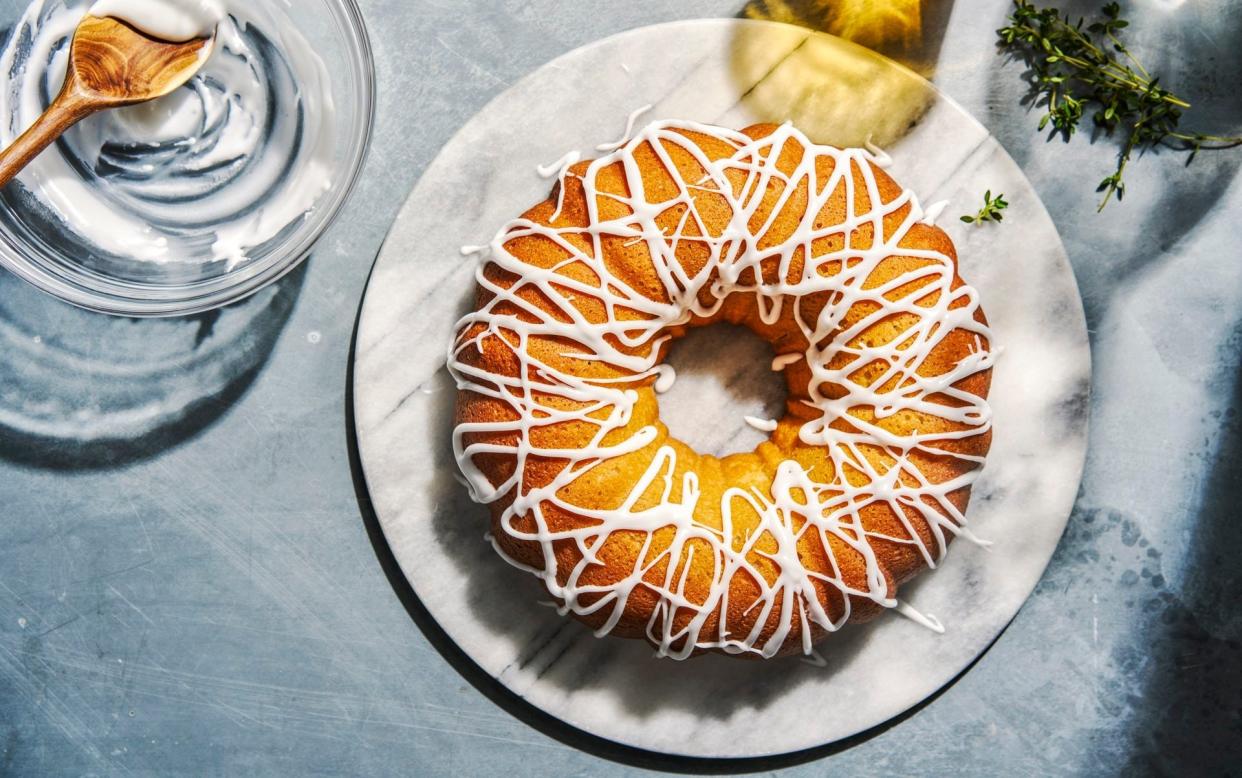The only three cake recipes you’ll ever need

Novelty is a drug. We love new flavours, new recipes, the unusual, the unfamiliar. But most of us also have a core repertoire of dishes that are as much a part of us as the way we dress. We make them because we love eating them but also because we could turn them out in our sleep.
I do make cakes that require work (layers of genoise, stripes of mousse-like filling, a glossy mirror of glaze on top) but these are project cakes, they’re not what I slide into the oven on a weekend afternoon. I also have what I think of as a ‘capsule wardrobe’ of cakes, favourites that can be subtly changed or accessorised.
Odette Williams, a New York-based baker and writer who adores cake, has an even larger core repertoire, one that she turned into a book, Simple Cake, in 2019 (Ten Speed Press, £18.99). It showcases 10 basic recipes with different flavour profiles and 15 toppings that you can mix and match. I’ve been gobbling it up ever since (and include her yoghurt cake recipe below).
My own basics are an olive oil and nut cake, one made with sour cream or yoghurt, and a chocolate cake made by the creaming method (in which butter and sugar are beaten until pale and fluffy before eggs and flour are added). Both the olive oil and the yoghurt cake are made with just a spoon, so you don’t even need to get your mixer out.
Perhaps you think, as I used to, that a cake made by stirring ingredients together must be somehow inferior to a more complicated one. But cakes made with either olive oil or yoghurt have something that those made with butter don’t: they have a moist, tender crumb and don’t dry out as they sit in their tin.
Greek yoghurt contains casein, a protein that improves moisture retention in cakes. It also contains lactose, a milk sugar whose flavour deepens and becomes more rounded as it cooks. And yoghurt’s tang balances this out, bringing contrast. It produces cakes that are satisfying in both flavour and texture. Oil-based cakes – and I make several types, from the almond and citrus recipe below to a light-as-a-cloud version that uses beaten eggs and dessert wine – are also moister than butter-based ones. Cakes made with butter, which is solid at room temperature, seem more dry the day after they’re baked than those made with oil (as oil is liquid at room temperature).
But oil-based cakes have another advantage. Butter tastes great – that’s why we use it so much in baking – but olive oils offer different flavours to play with. They can be grassy, bitter, as sweet as butter or fruity (some olive oils have a fig-like flavour). Cakes made with ingredients that work well with olive oil – lemon zest, rosemary and thyme, flower waters – can taste richer and more multifaceted than those made with butter. (Think how muted a butter-based lemon sponge is, then try to imagine a similar cake that harnesses the flavour profile of an assertive olive oil.)
The olive oil and nut cake shared above can be made with ground pistachios or walnuts instead of almonds; it can have a passion-fruit, coffee or rose-scented syrup instead of a lemon one (if you decide to use coffee, leave out the citrus zest, add a dash of vanilla and go for walnuts).
This Texas sheet cake isn’t here simply so you can muck around with it – though you can finish it with chocolate chips, chunks or shavings, add more coffee to the batter and top it with a coffee-flavoured glaze – but because it’s so damned good. It’s a dense, moist, chocolatey slab of a cake (it’s also known as Texas brownie cake) that can feed a crowd and be cut into squares as needed.
So, three simple cakes. And every one of them should be part of your capsule wardrobe.


